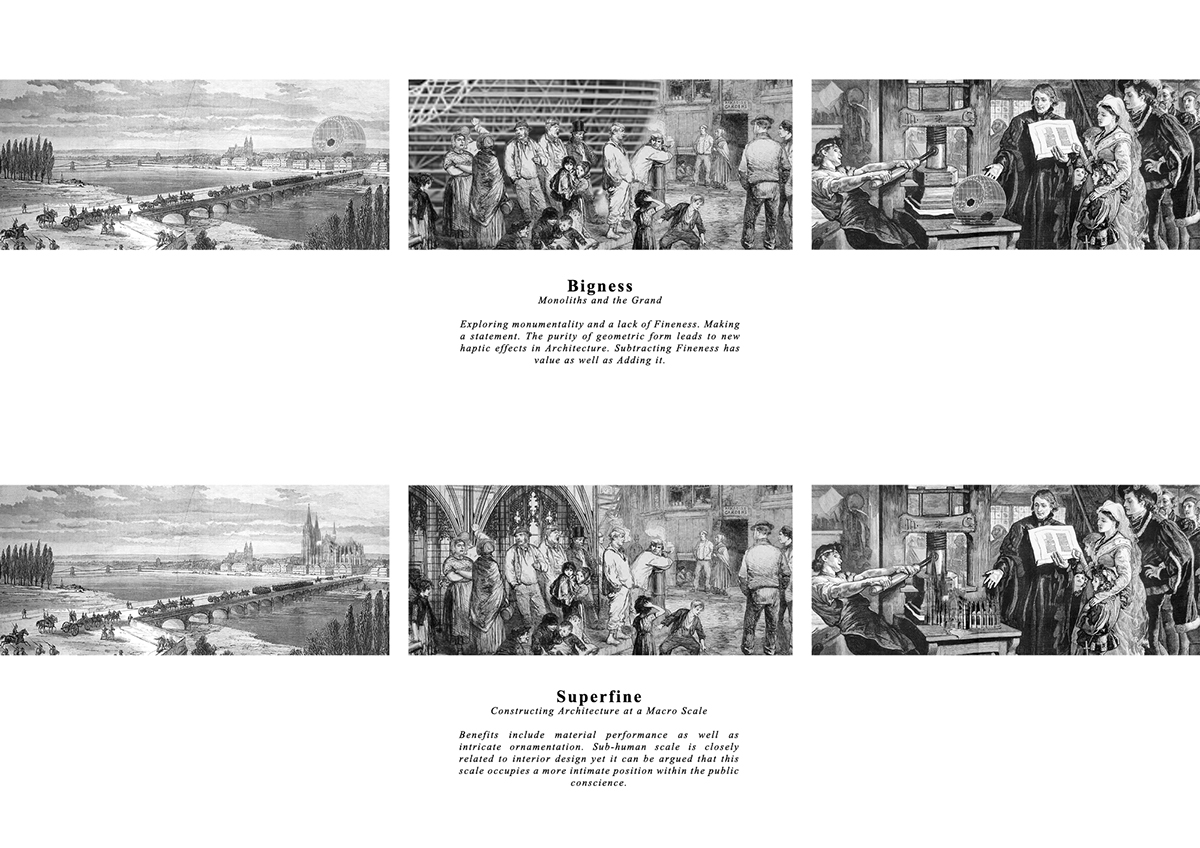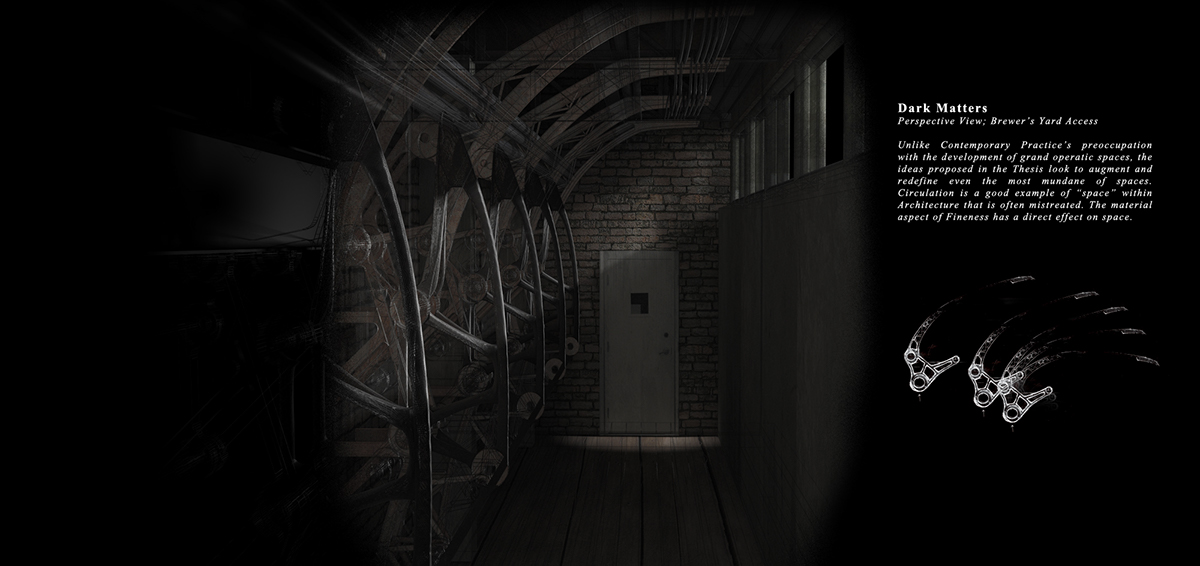ARCH5002_Mediating Fineness
Thesis Synopsis.
Mediating Fineness begins with a singular intention: to re-establish 21st Century Architecture back into the Public Conscience after almost a century of neglect.
Starting with research in Rome and a prospective project in Nanning, China, the Thesis sets out to critique contemporary practice’s lack of a grain, leading to a dissociation with the human scale. It proposes an idea of “Fineness”, a term first coined by Reiser and Umemoto in the Atlas of Novel Tectonics and suggests a new approach towards Construction Technology and Design Methodology. It argues that a conscious control of the Fineness is necessary, manipulating and articulating the Architecture so to connect with its’ audience. The research points out the popularity of classical Architecture lies not in its’ supposed history, but the way it is operated to be perceived at an occupants scale. "Ornament" is merely one form of this articulation of Fineness.
The Design revolves around the inception of unique and highly bespoke details and joints, which propagate across an existing generic mass housing scheme on site in Nanning; China, leading to a “Conservation via Augmentation” strategy. Instead of seeking to build new buildings to fill the cultural void in the community, it inserts wholly new and totally unique programs into existing generic structures, making them current and relevant.
Ultimately the Thesis rejects modern abstract notions of “Space” which, when used by the profession baffle and confuse its’ audience. It instead chooses to manipulate the material to redefine public attitudes towards Architecture.
Thesis Synopsis.
Mediating Fineness begins with a singular intention: to re-establish 21st Century Architecture back into the Public Conscience after almost a century of neglect.
Starting with research in Rome and a prospective project in Nanning, China, the Thesis sets out to critique contemporary practice’s lack of a grain, leading to a dissociation with the human scale. It proposes an idea of “Fineness”, a term first coined by Reiser and Umemoto in the Atlas of Novel Tectonics and suggests a new approach towards Construction Technology and Design Methodology. It argues that a conscious control of the Fineness is necessary, manipulating and articulating the Architecture so to connect with its’ audience. The research points out the popularity of classical Architecture lies not in its’ supposed history, but the way it is operated to be perceived at an occupants scale. "Ornament" is merely one form of this articulation of Fineness.
The Design revolves around the inception of unique and highly bespoke details and joints, which propagate across an existing generic mass housing scheme on site in Nanning; China, leading to a “Conservation via Augmentation” strategy. Instead of seeking to build new buildings to fill the cultural void in the community, it inserts wholly new and totally unique programs into existing generic structures, making them current and relevant.
Ultimately the Thesis rejects modern abstract notions of “Space” which, when used by the profession baffle and confuse its’ audience. It instead chooses to manipulate the material to redefine public attitudes towards Architecture.

















